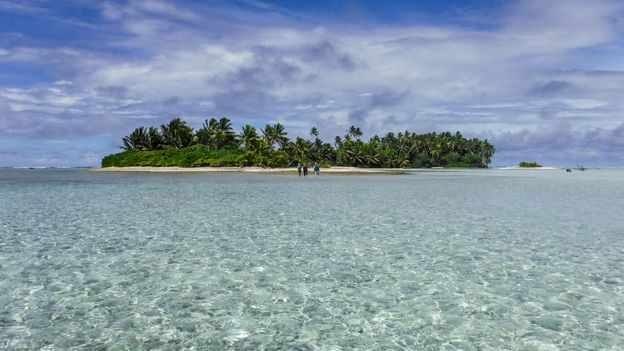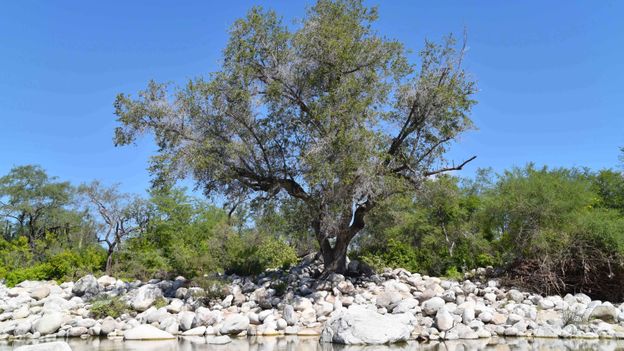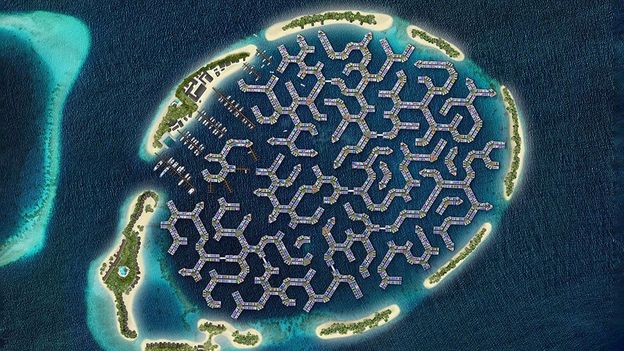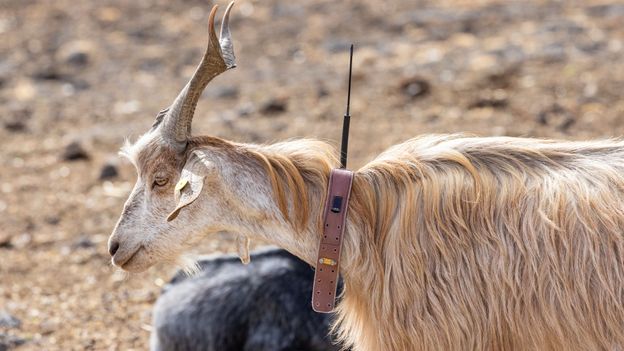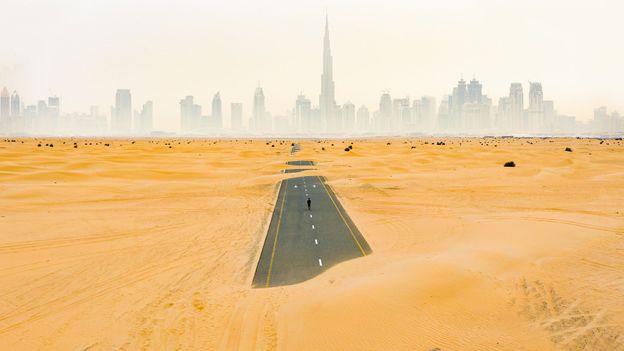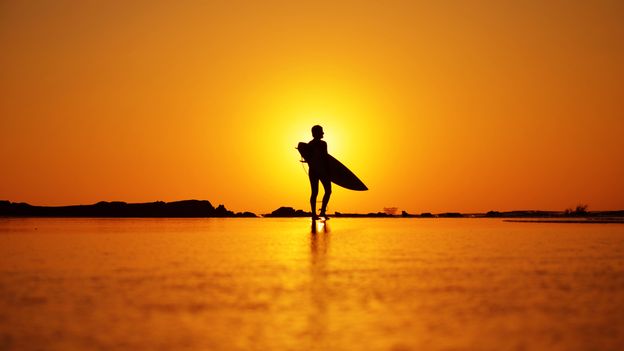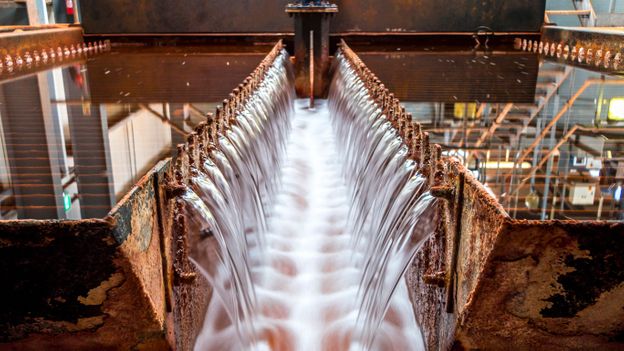One ongoing effort to tempt them back involves what Wegmann calls “our seabird discotheque”: electronic speakers that emit the calls of four seabird species, in a kind of public broadcasting message to passing birds. They are meant to attract the Phoenix petrel, the tropical shearwater, the wedge-tailed shearwater and the white-throated storm-petrel. While the efforts are ongoing, the researchers have yet to see first signs of any of the missing eight seabird species returning.
To take it up a notch, next the team plan to place wooden replicas of two more species, the grey-backed tern and blue noddy, around the atoll in clusters that resemble nesting colonies. The idea, Wegmann says, is that a seabird flying over might see them “and think, oh wow, there’s 30 of my relatives sitting there, maybe there’s something going on there, I should go check it out”.
‘Beautiful and restorable’
Encouraged by evidence that restoration is possible on atolls like Palmyra, conservationists are turning to other tropical islands. A team of specialists including, Landcare Research’s Samaniego, are planning to eradicate rats from islands in the Chagos Archipelago, using drones to drop the bait, a practical solution for remote islands.
On the Tetiaroa Atoll in French Polynesia, north of Tahiti, a project is underway that is similar to that on Palmyra. Tetiaroa is uninhabited except for a research station and a luxury resort. It presents specific challenges, such as the co-existence of two rat species: the Pacific rat, thought to have been introduced by Polynesian voyagers centuries ago, and the black rat, which probably arrived in the 20th Century. Rats swim back and forth between some of the 12 islands, meaning that if you remove them from only one, they may come back from another.
Nevertheless, one of the Tetiaroa islets, Reiono, was freed from rats in 2018, and two more followed this year. The goal is to eradicate rats from the entire atoll.
“It’s a beautiful atoll, and it’s a restorable atoll,” says the University of Auckland’s Russell. He first studied the rats on Tetiaroa with a colleague in 2009, kayaking between the islets and sleeping in tents. From a scientific perspective, the 12 small islands are like “micro-laboratories”, he said, each subtly different.
“We’re at a time where we have more capacity to do these, what I call ‘super ecosystem experiments’, where you can track multiple things by getting collaborators from all over the world to do their part and then integrate the data,” says Oregon State University’s Rebecca Vega Thurber. She is overseeing a new marine ecology research project at Tetiaroa, and plans to do similar research at Palmyra, unpicking the interactions between land conservation and marine life.
Looking back on Palmyra’s recent history, Wegmann sees it as a source of hope. Tropical islands may seem fragile, but they can turn out to be surprisingly robust. The conservation story of Palmyra should remind us of two things, he says: “One, nature is resilient. And two, we as humans can engineer ourselves out of some of the major problems that we’ve caused.”
—
The emissions from travel it took to report this story were 0kg CO2. The digital emissions from this story are an estimated 1.2g to 3.6g CO2 per page view. Find out more about how we calculated this figure here.
—
Join one million Future fans by liking us on Facebook, or follow us on Twitter or Instagram.
If you liked this story, sign up for the weekly bbc.com features newsletter, called “The Essential List”. A handpicked selection of stories from BBC Future, Culture, Worklife, and Travel, delivered to your inbox every Friday.

